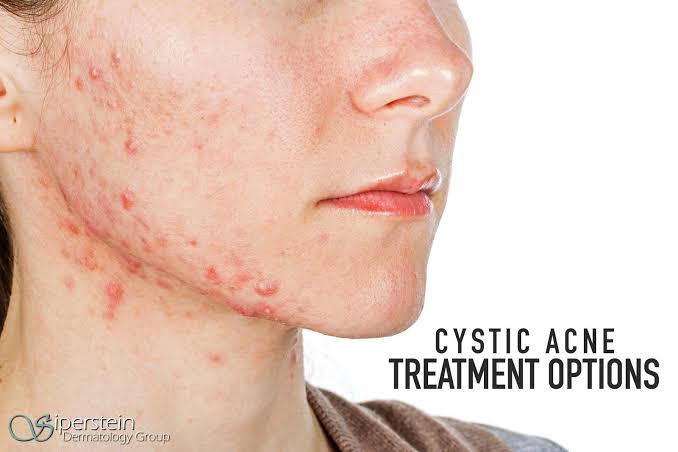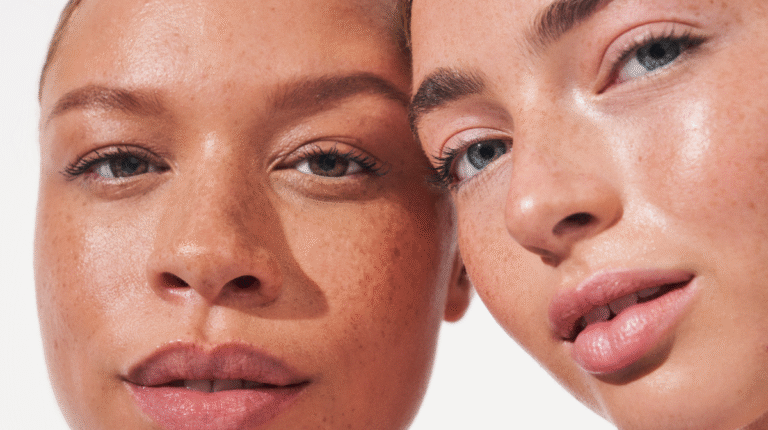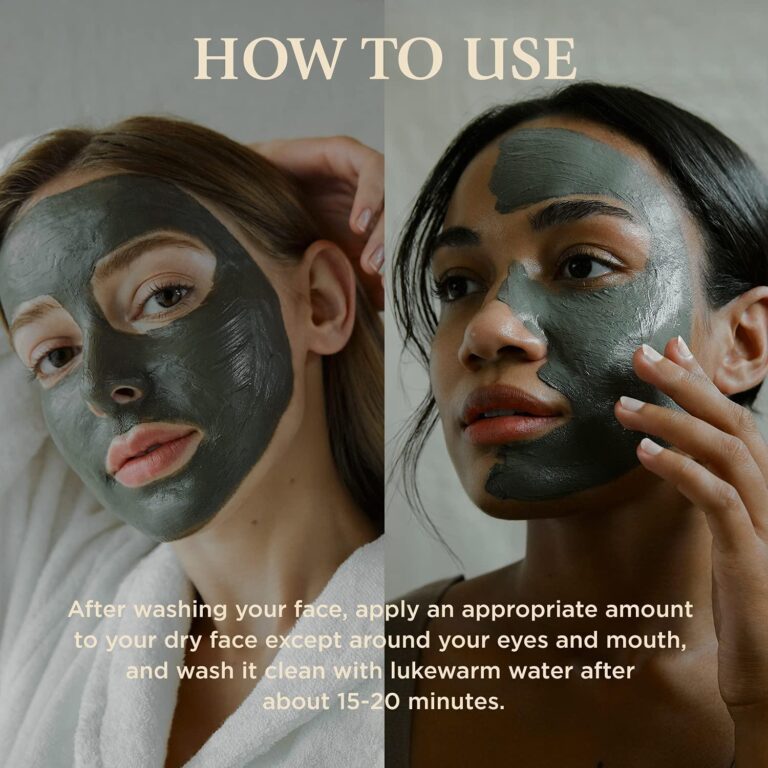
There are many types of acne and they all cause distress, but there is one type of painful pimple that can last for weeks: cystic acne. Although pimples can appear in many shapes and sizes, cystic acne is considered the most severe type of acne. It is characterized by the presence of sensitive and inflamed nodules under the skin.
But the question is how do we get rid of cystic acne? Don’t worry, there are many ways to get rid of those pimples. We spoke with dermatologist Dr. Shaima Abdel Meguid to get the best advice on how to treat cystic acne. Keep reading to find out what cystic acne is, how it differs from regular pimples, what causes it to appear, and most importantly, what treatments are available.
What is cystic acne?
Cystic acne is characterized by red bumps that are painful to the touch and often inflamed under the surface of the skin. Cystic acne is the most serious type of acne , and it is also the largest. These pimples are difficult to treat due to the absence of visible heads and may persist for a month under the surface of the skin in the absence of treatment, and may leave scars in their place. Although cystic acne is often used by some to denote nodular acne, many experts suggest that they are two different types of acne.
According to Dr. Shaima Abdel Meguid, cystic acne often appears in the teens or early twenties, especially if there is a family history of acne in one of the parents. Acne cysts may be most noticeable on a person’s face, but they are also common on the chest, neck, back, and arms. Cystic acne can appear even on the shoulders and behind the ears.
All forms of pimples can affect psychology and mood, and the risk of psychological distress is relatively higher for cystic acne since it has a greater impact on facial appearance and affects young people who may be more socially sensitive.
What causes cystic acne on the face?
If you want to get rid of inflamed acne effectively, you must first know the causes of its appearance.
Four main factors that cause cystic acne to appear on the face are:
1- Clogged hair follicles. Dr. Shaima Abdel Meguid notes that cystic acne appears in oily skin when pores are clogged with excessive sebum and dead skin cells.
2- Hormonal changes, especially in adolescence. These changes increase the production of sebum, the substance responsible for oily skin, which leads to inflammation and swelling of the sebaceous glands and then rupture, leading to the formation of cystic acne.
3- An unhealthy diet. Dr. Shaima Abdel Meguid points out that the relationship between acne and eating is controversial, but recent research shows that diet can play an important role in the development of acne, especially foods rich in refined carbohydrates such as white bread, rice, soda, fast food, and omega-6 fats. and chocolate.
4- Fatigue , stress and tension. These factors increase the production of androgens, which stimulate pimples and breakouts.

What is the treatment for cystic acne?
This particular type of acne can cause significant scarring and should therefore be treated properly!
Simple steps to treat these pills
These pesky pimples won’t go away easily if you don’t follow specific steps. Below are the best cystic acne treatments and instructions on how to get rid of those bags under the surface of the skin as quickly as possible.
1- Start with a lotion and then follow with a topical acne treatment. Cleaning is a step you may already have practiced, but one that we should always knock on over and over again. It is important to gently cleanse the skin once or twice daily to remove any makeup, oil, or bacteria that may contribute to breakouts. In addition to cleansing, applying a topical acne treatment is an essential way to protect and smooth your skin and eliminate acne scars.
Keracnyl Foaming Gel from Ducray, the leading skincare brand, is a soap-free cleanser that deeply purifies skin by removing excess sebum, dirt and impurities. It also helps reduce lesions, so make this lotion a part of your daily routine and enjoy the results!
 Use this lotion twice daily along with Ducray Keracnyl PP Anti-blemish Soothing Cream , a product that eliminates redness and irritation, reduces blemishes and keeps skin well-hydrated. Apply morning and evening all over the face.
Use this lotion twice daily along with Ducray Keracnyl PP Anti-blemish Soothing Cream , a product that eliminates redness and irritation, reduces blemishes and keeps skin well-hydrated. Apply morning and evening all over the face.
 For those with sensitive skin, Cleanance Cleansing Gel from Eau Thermale Avène, the brand that offers a range of products specifically designed for this type of skin, is a must! With its powerful ingredients, this soap-free gel gently removes dirt, oil and other impurities without stripping the skin.
For those with sensitive skin, Cleanance Cleansing Gel from Eau Thermale Avène, the brand that offers a range of products specifically designed for this type of skin, is a must! With its powerful ingredients, this soap-free gel gently removes dirt, oil and other impurities without stripping the skin.
For extra help fighting blemishes, Cleanance Comedomed , a new treatment from Eau, Thermale Avène hydrates, removes oils and limits the appearance of blemishes. Its gentle formula is based on two main ingredients:
- Comedoclastin™ is a unique ingredient that reduces existing impurities and blackheads and limits the appearance of new ones thanks to its sebum-regulating action.
- Avène Thermal Water that soothes, softens and reduces skin reaction.
 If you are looking for natural skin care products, A-Derma is a brand based on Rhealba®, which protects the skin for everyday comfort. Phys-AC Foaming Gel from A-Derma gently cleanses and purifies acne-prone skin without drying it, thanks to its reparative moisturizing agents. As a result, the skin is clear, refreshed and shine-free.
If you are looking for natural skin care products, A-Derma is a brand based on Rhealba®, which protects the skin for everyday comfort. Phys-AC Foaming Gel from A-Derma gently cleanses and purifies acne-prone skin without drying it, thanks to its reparative moisturizing agents. As a result, the skin is clear, refreshed and shine-free.
Uses A-Derma Phys-AC Global to this side of lye, a daytime cream anti-skin imperfections moisturizes without grease to provide maximum comfort. Reduces sebum, limits bacteria adherence, and refreshes skin. As a result, blemishes are reduced and the complexion becomes more radiant and shine-free.

2- Finally, apply sunscreen. It is important to use sunscreen if you suffer from cystic acne to prevent it from developing. So, always make sure to apply a sunscreen specifically formulated for acne-prone skin before stepping out. We recommend that you try Eau Thermale Avene’s Very High Protection Fluid SPF 50+ which will protect your skin from harmful UV rays. In addition, it does not leave any greasy effect on the skin.

3- Balance your diet. As mentioned earlier, it is best to avoid carbohydrate-rich foods as much as possible as they may lead to increased fat production.
4- Never squeeze cystic acne. When you try to squeeze a cystic pimple, it leads to increased inflammation, scarring and discoloration of the skin.
5- Put ice . According to Dr. Shaima Abdel Meguid, ice can reduce swelling and inflammation.
Medical treatment for cystic acne
You can always supplement your routine with medical treatment, especially if your acne is causing you pain.
According to Dr. Shaima Abdel Meguid, isotretinoin may be the most powerful prescription for cystic acne. However, this drug has many side effects that you should be aware of. So you should consult a dermatologist to discuss this option with







